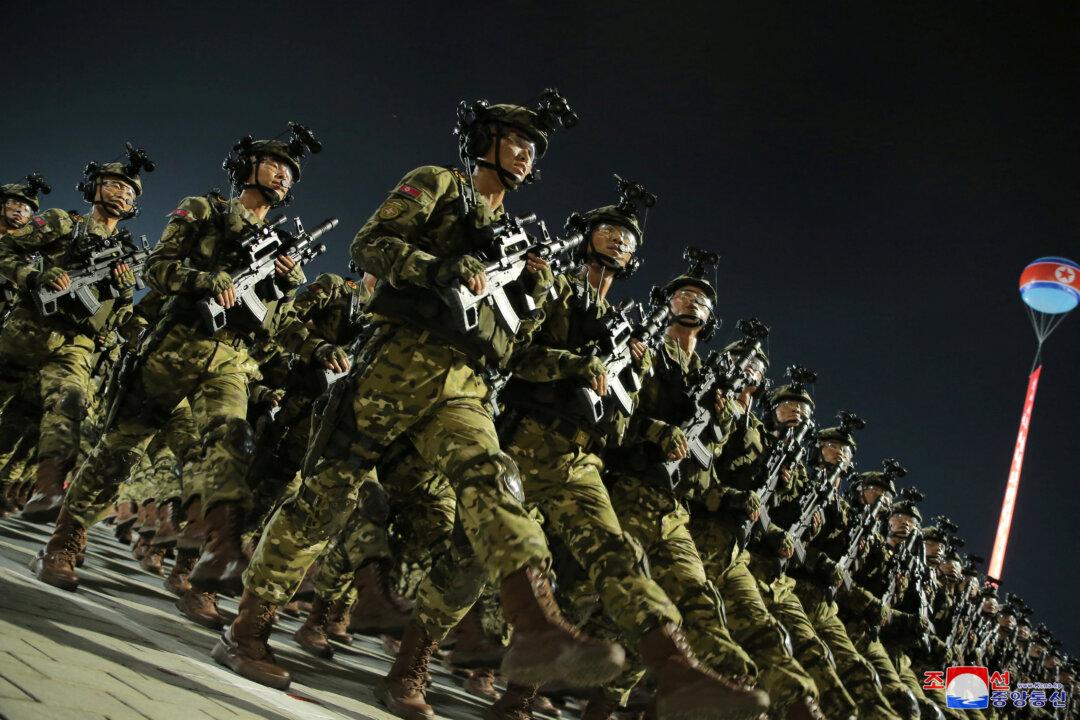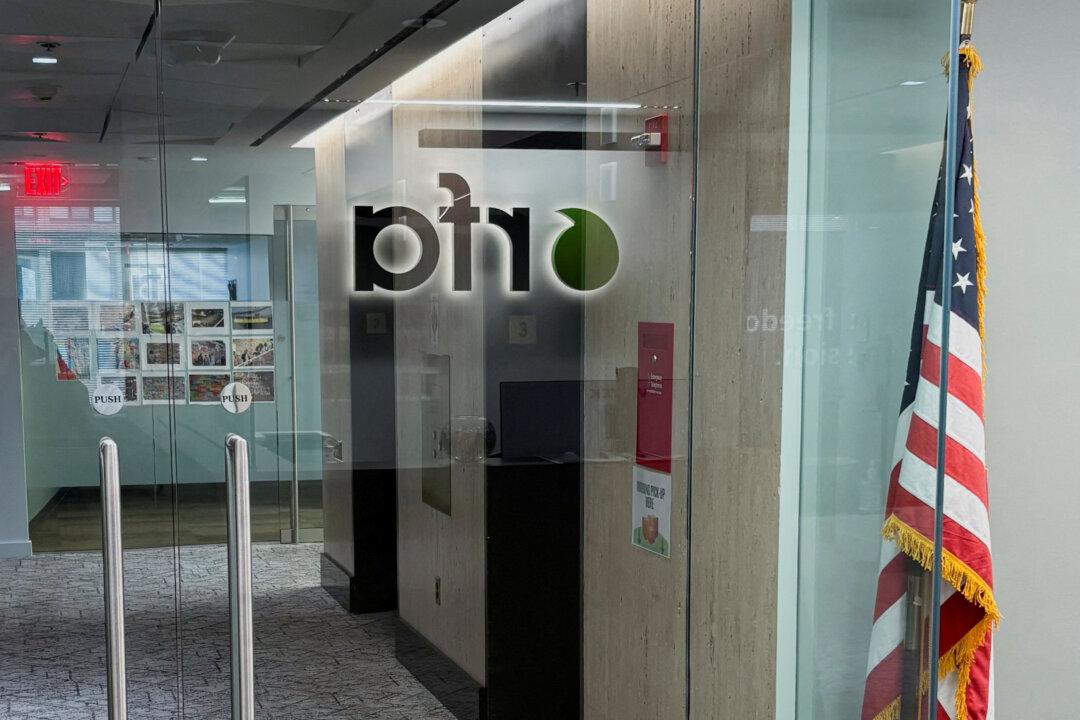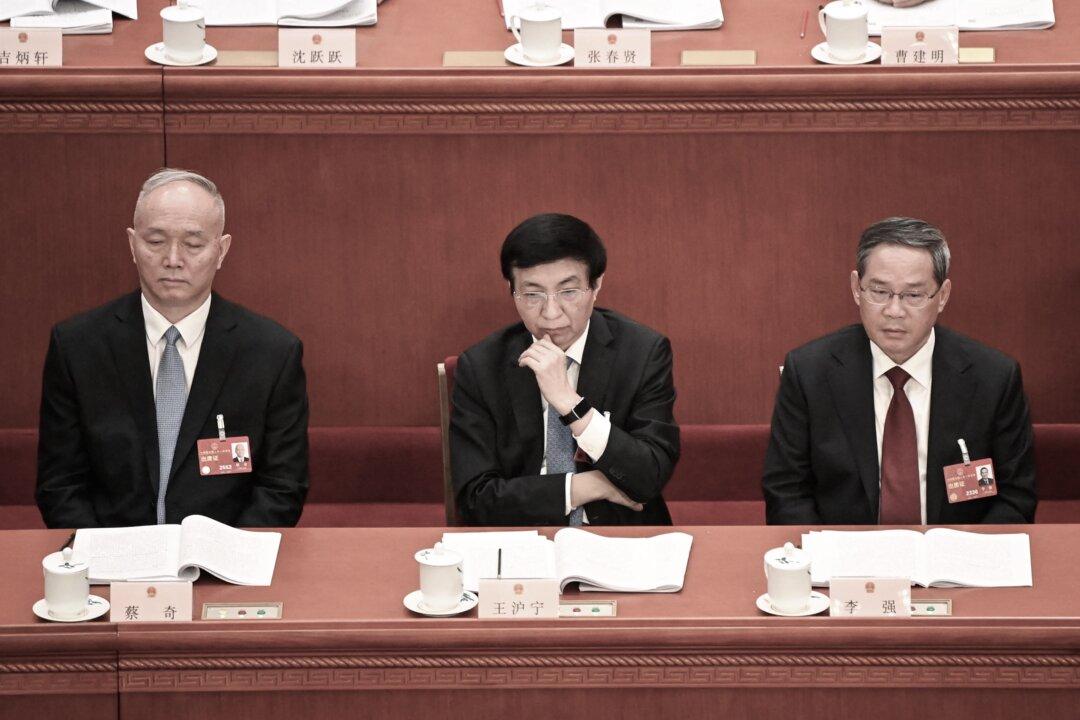Hong Kong police sprayed blue-dyed water from a water cannon truck onto a mosque and bystanders on the afternoon of Oct. 20. Hong Kong leaders, including Chief Executive Carrie Lam and the police authorities, later offered an apology and explained that the police did not have a “malicious intent,” as the reason they fired the water cannon was because there was an “unruly crowd” in the area.
Current affairs commentator Jiang Feng believed it was an intentional assault, a mission assigned by top police officials with the purpose of creating discord among Hongkongers and dividing society. Jiang runs a Youtube program called “What Happened Today in History?” which focuses on current affairs and historical events.
In a video he posted on his Youtube channel on Oct. 22, Jiang said Hong Kong police had planned to assault the mosque, but wanted to cover up their real intention by spraying at the “unruly crowd” by the entrance; however, they encountered a very embarrassing situation—demonstrators had already left this area long before the police arrived.
Jiang then showed a footage captured from a drone camera to support his statement. The footage shows that when the water cannon motorcade was slowly approaching the mosque, both sides of the street were almost empty. Then the first water cannon stopped at the gate, aiming and spraying blue water at the people in front of the entrance of the mosque.
[/epoch_social_embed]
“These victims, about a dozen of them, were standing in front of the mosque, and they obviously were not protesters,” Jiang said, “Then why did the police make such a silly and awkward move? Because it is an order they had to follow, and this task is precisely about assaulting the mosque.”
Jiang’s statement is consistent with the testimony of Mohan Chugani, former head of the Hong Kong Indian Association and one of the victims who got sprayed by the blue water. Chugani, 73, pointed out that the excuse police used in their apologies cannot be true. “I wouldn’t be standing there and chatting with friends if the streets were in chaos,” he said.
 Mohan Chugani, former head of the Hong Kong Indian Association, poses at his home on Oct. 21, 2019 during an interview withe the Chinese-language Epoch Times. (Song Bilong/The Epoch Times)[/caption]
Mohan Chugani, former head of the Hong Kong Indian Association, poses at his home on Oct. 21, 2019 during an interview withe the Chinese-language Epoch Times. (Song Bilong/The Epoch Times)[/caption]Jiang believed that the intentional assault at the mosque is meant to provoke Hongkongers who are of South Asian descent. He mentioned that several South Asian groups have lived in Hong Kong for about 200 years. For instance, in the case of local Indians, their ancestors were the first group of foreigners who set foot in Hong Kong because their ancestors were Indian soldiers serving in the British army when Great Britain colonized Hong Kong.
Jiang further explained that the South Asian Hongkongers played some key roles during the anti-government protests in the city.
First, a few days after a group of gangs attacked protesters, journalists and commuters at the Yuen Long train station on the night of July 21, one of the perpetrators openly admitted that he was paid to assault the protesters, and this person was of South Asian descent. Jiang said the police must have been furious with his confession.
Second, several pro-democracy lawmakers and activists were assaulted in the streets recently, and oftentimes it involved henchmen from the South Asian community, as in the attack of Jimmy Sham—an activist and convener of the Civil Human Rights Front (CHRF), the organization behind some of Hong Kong’s biggest protests.
Jiang said that if local gang members of Chinese origin are mobilized to attack protesters or pro-democracy activists, it would be easy for residents to recognize them and make their identities known to the public. But the South Asians in Hong Kong are a minority group, living within their own communities, and thus do not have this issue.
Moreover, hiring this group of people as henchmen will make the conflicts in Hong Kong even more complicated. The Chinese authorities often instigate a group of people to hate and target another group as a way to complicate the problem and divert public attention away from the real issue. And this time it’s no different, Jiang said.
Shortly after Jimmy Sham was attacked, a group of representatives from the South Asian community paid him a visit at the hospital, and emphasized that they are firmly against any form of violence.
The protesters also issued a public statement, promising that they would not damage the Islamic Center, businesses and shops owned by South Asian locals and “will not indiscriminately assault South Asians,” Jiang said, showing footage of the public statements from both sides.
 Jimmy Sham, convener of the Civil Human Rights Front (CHRF), poses during an interview with AFP in Hong Kong on Aug. 20, 2019. (Anthony Wallace/AFP/Getty Images)[/caption]
Jimmy Sham, convener of the Civil Human Rights Front (CHRF), poses during an interview with AFP in Hong Kong on Aug. 20, 2019. (Anthony Wallace/AFP/Getty Images)[/caption]Moreover, some protesters, including pro-democracy lawmaker Jeremy Tam Man-ho, went to the mosque in Kowloon on Oct. 20 to guard it—the day of the mass parade following the attack on Sham. They were among those who got sprayed from head to toe when the police fired the water cannon.
“How very wise and clear-minded these Hong Kong citizens are!” Jiang praised them enthusiastically.
The police tried to sow discord between the protesters and the South Asian residents. On the contrary, both sides have seen through its evil motives and they have become more united, Jiang said, adding that the police must have felt frustrated and embarrassed at their failed scheme.
“I believe the assault at the mosque was intentional because by vandalizing the local Muslim’s sanctuary, the police thought they could make Muslims hate those protesters who demonstrate in front of the mosque and thus create such a big mess. However, as the protesters had already left the area, the whole world can see how silly the Hong Kong police is when they fired the water cannon,” Jiang concluded.





